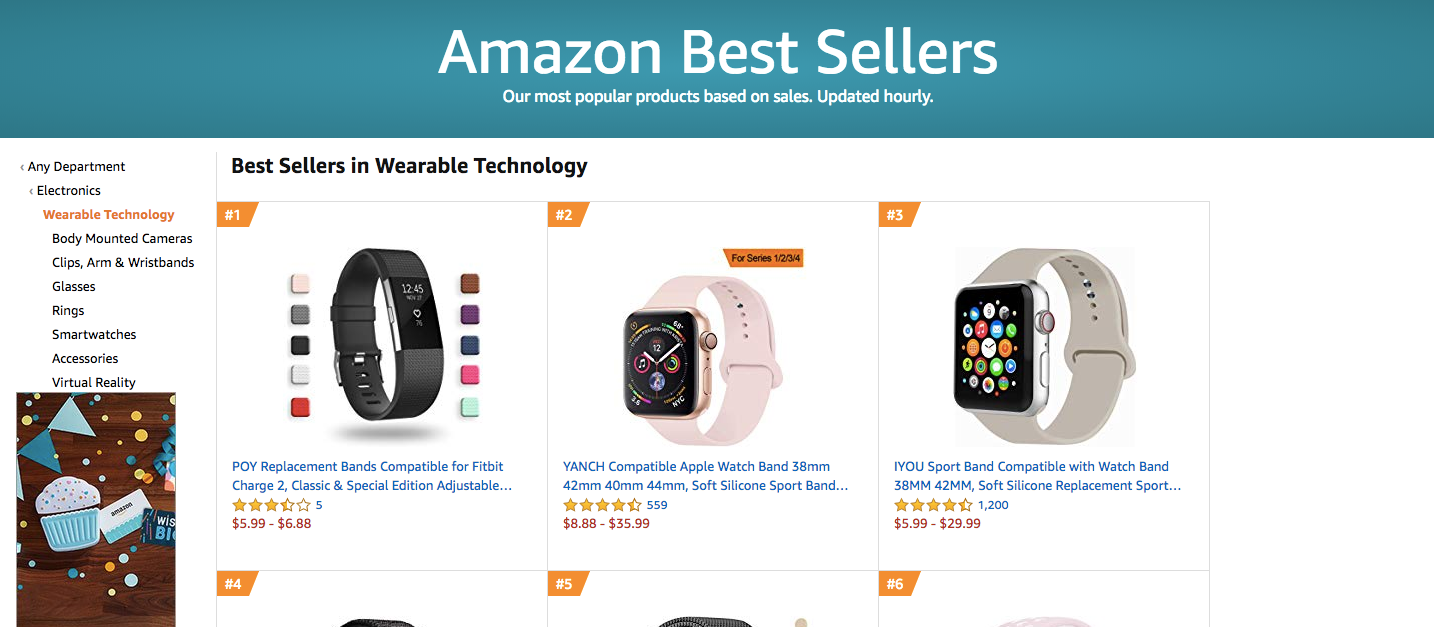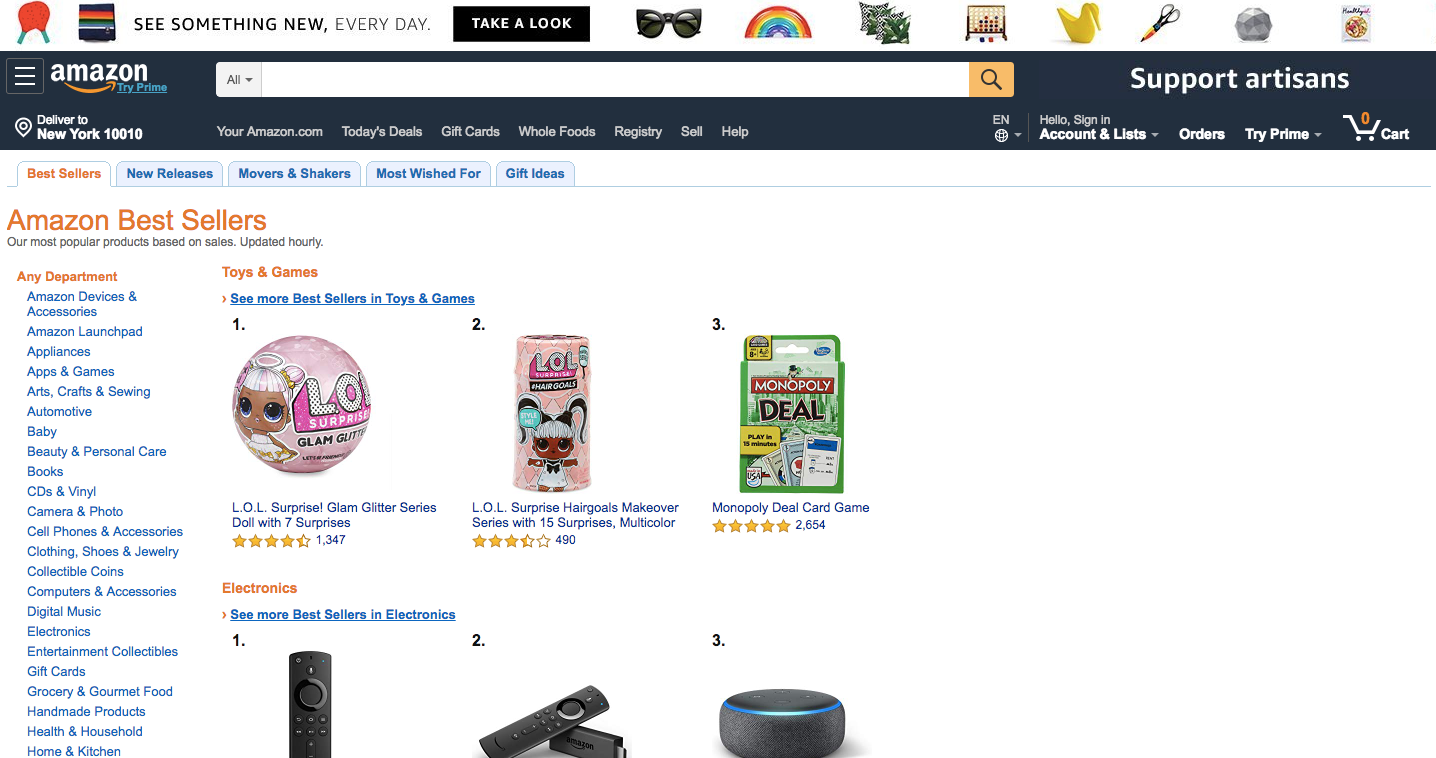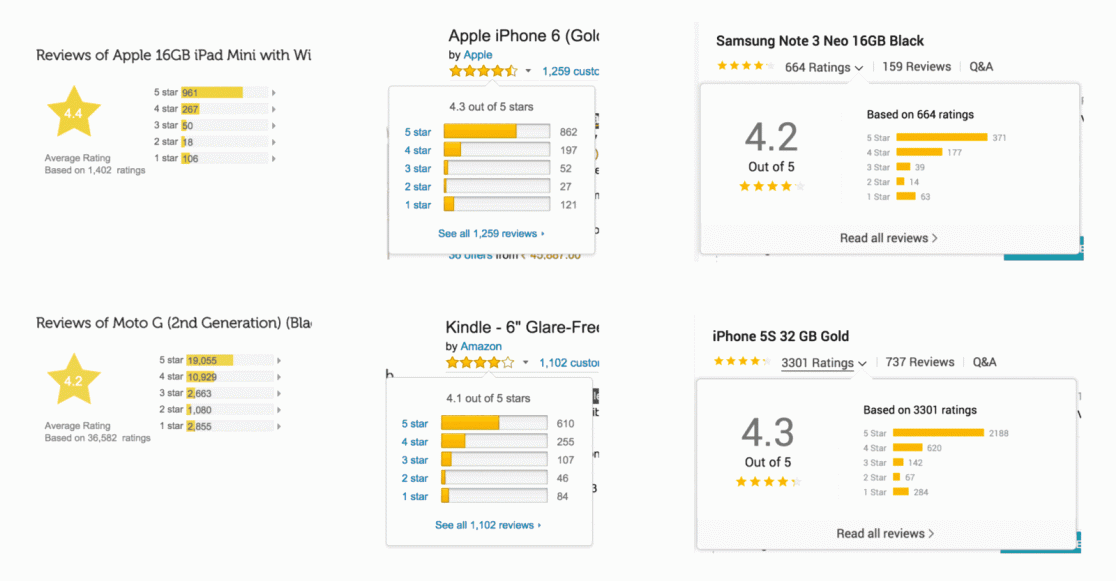3 Quick Hacks to Get Your Product on Amazon Best Seller List
Amazon best seller badge is the one thing that literally every Amazon seller wants.
You might have seen the orange “Best Seller” icon above an Amazon product listing. The badge tells shoppers that the item is popular and highly sought after. And, by extension, can give a really big sales boost to the seller.

Since social proof is a big factor in influencing shoppers, having the Amazon best seller badge shows buyers that the product is highly sought after and that the brand can be trusted.
Though with so much competition among sellers and potentially hundreds or thousands of competing products, it’s also incredibly difficult to get an Amazon best seller badge.
What is Amazon best seller?
There’s actually a lot of things that even Amazon sellers themselves don’t know about the best seller list and ranking criteria. The most common assumption is if you sell a lot of products in a short time, you’ll get into the Amazon best seller list.

Though that’s partially true, there are many more factors that influence how a product is tagged as a best selling item by Amazon. Why is it important to understand how Amazon ranks its products? That’s because the better you understand what makes a product a best selling item, the easier it will be for you to take actionable steps toward achieving just that.
Here’s a brief overview to help you get a better idea of how Amazon decides which are their best selling products:
The Amazon best seller ranking is relative
The speed of your sales (or sales velocity) definitely sends a strong signal to Amazon’s algorithm that the product is a hot selling item. At the same time, the best seller ranking is also compared in relation to other products within the same category.
Let’s say for instance you see a sudden jump in sales for your product, you might not necessarily see the item climb in Amazon best seller rankings. This is especially the case when Amazon sees that other products in that same category also experienced the same increase in sales.
The relative ranking is also the reason why newly launched products might get an Amazon best seller badge while a similar older product with more sales doesn’t have the badge.
Amazon uses predictive tech to determine rankings
If a product suddenly goes viral and gets a huge boost in sales, it’ll definitely be tagged by Amazon as a best selling item, right? Well, not necessarily.
Amazon has predictive features built into their algorithm that also takes into account the product’s historical data. That means recent sales is not the main factor that Amazon takes into account. It’s also able to predict, based on the historical data of the product, whether or not it’ll be able to overtake another similar product in a given time.
It’s evident that Amazon ranking is logarithmic in nature, which makes it harder and harder for a product to climb up each ladder in rankings. A large majority of products that are on the Amazon best seller list are often those that have the most amount of sales (in that product category) over a long period of time.
Amazon best seller ranking depends on BOTH sales and reviews
Amazon is pretty smart. Getting a lot of sales alone just won’t cut it. To get that highly sought after best seller icon, your product needs to also be good and of high quality. Which means the ranking will depend on both high volume of sales and a lot of good reviews.

It’s part of Amazon’s policy of not just being a marketplace that just sells products, but also a place where buyers can find products of the highest quality that meets their needs. If you want to be a successful Amazon seller and stay in the game for the long term, it’s best you also follow the same philosophy.
There’s no doubt that the online retail business is sales driven. But as an Amazon seller, it’s a good idea to not just focus on the numbers but also ensure that you’re selling a great product. That’s the only way to get as many good reviews and positive ratings as possible. Add that to a cumulative increase in sales, and you have a winning recipe to climbing Amazon’s best selling rankings.
So, as a seller, how exactly can you get the much coveted Amazon best seller badge?
Luckily for you, we dug deep to find the quickest, easiest and most cost-efficient ways that can help increase the potential of getting an Amazon best seller icon for your chosen product.
Here are 3 surprisingly easy hacks to propel your product to the Amazon best seller list:
Hack #1: Run regular product giveaways
Never underestimate the power of Amazon product giveaways.
It’s a great tactic to launch your products, but it’s also a smart way to get a quick boost in sales. While you’ll be “spending” money by giving away your products for free, it’s also a good alternative method of marketing your Amazon brand and capturing more sales at the same time.

Product giveaways is a pretty common tactic among experienced sellers who are launching a store or a new Amazon product. That’s how Amazon sellers get their first batch of sales and reviews. But, of course, it’s not a scalable method.
As we’ve mentioned earlier in this article, Amazon’s algorithm has predictive features that take into account both the product’s sales velocity and its historical sales data. Which means if your product only experiences a short burst of sales increase, Amazon won’t see that as a best seller signal. You’ll need a regular increase in sales as opposed to quick bursts followed by a lull in sales.
The quick solution? Don’t just run a single giveaway campaign at the start of your store or product launching. Instead, make it regular and spread it across the year. It might even be a good idea to run it during low shopping season, as that may help to even out your Amazon store’s overall, annual sales volume.
Note: If you’re an Amazon FBA seller, click here to get more information regarding doing product giveaways for Amazon FBA.
Hack #2: Drop your price to break-even
Now, this is a trick that’s as old as sales itself.
The main purpose is not to low-ball your competition by outpricing them, but rather to reduce your price as low as possible to increase your volume of sales per unit. The general rule is the higher the price, the lower the sales. And the lower the price, the higher the sales.
If you decide to try this tactic, make sure you price it smartly. Never price it below your cost price. Instead, reduce it to as near break-even price as possible. That way you won’t be sacrificing a larger sum except receiving a lesser profit margin. You can also run this on a regular basis and spread it across the year, especially during low season.
Hack #3: Change your Amazon product sub-category
Since the Amazon best seller ranking is relative, another smart way to boost your rankings and get the best selling badget within arms reach is to reduce the competition.
The easiest way to do that is to change your Amazon product sub-category to another similar category but one that is a lot less competitive. It may not work well for every type of product, but if you can make yours work then it might just make the process of getting an Amazon best seller badge a lot easier.
Here’s another secret (but related) tip: Use both the first and second hacks, after you change to a less competitive Amazon product sub-category. It will almost surely help you climb the Amazon best seller ranking much faster that you think.
Though these hacks might seem like quick shortcuts, there’s little doubt that getting an Amazon best seller can be very challenging. You might be lucky and get the badge quickly, or it may turn out to be a long grinding climb up the Amazon ranking ladder.
Either way, these tips will definitely make your journey a lot easier towards attaining that ever illusive (but profitable) Amazon best seller badge.